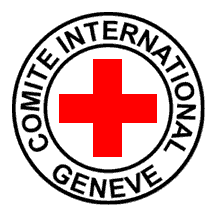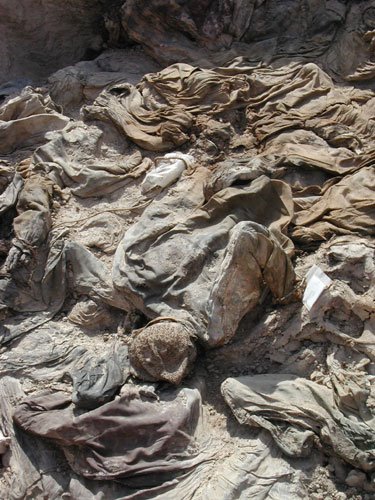
Next month marks the 150th anniversary of the first attempt to lay an
Atlantic telegraph cable. In July 1857, the job of laying 2,500 tons of cable across the ocean began. Though the attempt failed (and it would take another nine years for a properly working telegraphy link between Britain and America to function), the anniversary marks an important milestone in the coming of, what Marshall McLuhan was to call over a hundred years later, “
the global village”.
The transatlantic cable is one of the important milestones of telegraphy covered in English author Tom Standage’s 1998 book “
The Victorian Internet”. Standage’s thesis in the book is that the way in which the telegraph revolutionised the 19th century world is remarkably similar to how the Internet is doing the same thing 150 years later. Both communication mechanisms have proved immune to regulation while both also annihilated distance, revolutionised business, and gave rise to new forms of vocabulary, crime and romance.
Standage traces the beginning of telegraphy back to a bizarre experiment that zapped Parisian monks in 1746. The French scientist
Abbe Jean-Antoine Nollet was dishing out electric shocks to a line of 200 unsuspecting Carthusian monks each carrying 7.5 metres of iron wire. Nollet’s electrotherapy proved that electricity could travel quickly over great distance and held out the promise of high speed signalling between remote places.
But the first practical signalling device didn’t involve electric wires. Fifty years after Nollet, his compatriot
Claude Chappe evolved a messaging system out of coded black-and-white panels, synchronised clocks and a telescope. In 1791 he sent a message to his brother 16kms away which read in French “if you succeed, you will be covered in glory”. Chappe called his new invention “le télégraphe” from the Greek words for 'far writer'. Chappe expanded his design to do away with the clocks and used a regulating rotating arm which allowed for 94 code symbols. The new post-revolutionary government quickly saw the potential of the new invention and began to build a network of towers to ferry news between towns.
Napoleon was a
firm believer in the telegraph and in 1804 he ordered the construction of a line from Paris to Milan. Not to be outdone, Britain followed suit and by the 1830s telegraph towers were springing up all over Europe. But the optical telegraph was fundamentally flawed. Towers were expensive to build and the process needed clear daylight to work. What was needed was an electric telegraph and the race was on to build the prototype.
In 1820, Danish physicist
Hans Oersted discovered that an electric current produces a magnetic field which will deflect a compass needle. That same year the German Johann Schweigger (who also named the element chlorine) invented the galvanometer. In conjunction with the electromagnet and the voltaic battery, the galvanometer was the foundation of a working electric telegraph. Two amateur scientists separated by the Atlantic Ocean and unknown to each other were to make it work: Samuel Morse in New Haven and William Fothergill Cooke in London. Both men patented their work in 1837.
Cooke’s English telegraph was greatly helped by Professor
Charles Wheatstone who knew how to get signals to travel long distances. The two formed an uneasy partnership. Wheatstone was first and foremost an experimental scientist while Cooke was a go-getting entrepreneur. But together they successfully designed and patented a five-needle telegraph that could allow for 20 letters (C, J, Q, U, X and Z were the unlucky letters who missed out).
While Cooke and Wheatstone took a few months to perfect the telegraph, Morse spent five years getting his invention up and running. His design was overly complex and he ran into similar issues in getting signals to travel long distances. He was greatly assisted by Alfred Vail who became a partner in his venture. They developed the
code that bears Morse’s name based on using long and short bursts of current. They also simplified the design to make a working telegraph. All they had to do now was sell it.
But he had difficulty convincing sceptics they had a useful new device. Morse failed to win over US congress and was equally unsuccessful on a sales trip to Europe.
Cooke did marginally better and managed to get the Great Western Railway to run a 21km telegraph link between Paddington and West Drayton stations. But even then, the railway lost interest and Cooke had to front up his own money to extend the line to Slough. By 1841 Cooke thought his new invention was foundering.
Back in the US, Morse eventually won some government funding to build an experimental line. He ran a line alongside the 64km railway track between Washington and Baltimore. Before it was completely finished, Morse used the line to transmit the Whig Party presidential nomination in Baltimore and did so 64 minutes in advance of the news arriving in Washington by train. Three weeks later, on
24 May 1844, Morse officially inaugurated the line from Washington to Vail in Baltimore sending a quote from the Book of Numbers 23:23 “What hath God wrought.”
In Britain, the telegraph took off a year later when it was used to transmit news from Windsor Castle to London. Queen Victoria gave birth to her second son Alfred Ernest on 6 August 1844 and within 40 minutes, “The Times” was announcing the news on the streets of London saying it was “indebted to the extraordinary power of the Electro-Magnetic Telegraph”. Having proved its prowess to the press, it was soon impressing the police too. The telegraph was used to apprehend a killer.
John Tawell murdered his mistress and he absconded by train from the scene of the crime in Slough. Police sent his description on by telegraph ‘dressed like a Kwaker’ (in the absence of Q’s) and he was easily apprehended at the other end. The telegraph wires were subsequently lauded as “the cords that hung John Tawell”.
Across the Atlantic, the US congress remained apathetic to Morse’s version despite the success of his Washington experiments. He teamed up with
Amos Kendall who proposed to set up lines privately. The men set up the Magnetic Telegraph Company and built lines towards Philadelphia, Boston, Buffalo and New York. Kendall advertised in the New York newspapers saying the fee for sending a telegraph was 25 cents for 10 words. The business quickly began making profits.

Once established, telegraph growth was explosive. By 1850, there was almost 20,000kms of wire in the US alone. It was used by bankers, merchants, government, police, business, shipping, courts and what one British writer called “messages of every character usually sent by the mail”. The
Great Exhibition of 1851 in London had 13 different designs for improvements on the telegraph. By 1852, Prussia had laid 2,400 kms of lines radiating out from Berlin. Austria and Canada nearly had as much and lines were being laid in Italy, Spain, Russia, Holland, Australia, Chile and Cuba. Only France remained obstinate, reluctant to abandon the optical telegraphy they had given to the world 50 years earlier.
Messages were quickly dubbed ‘telegrams’ and sent by central telegraph offices to their destination office before being transcribed onto paper. Telegraph messenger boys would then take the messages to the recipient.
Messenger boy was an occupation seen to be a good stepping stone to success; both Thomas Edison and Andrew Carnegie both started their careers in this way.
As more countries became connected, they soon wanted to talk to each other. Prussia and Austria signed the first interconnection treaty in 1849 and soon spread to the rest of mainland Europe. But until someone could solve the problem of underwater cables due to the deterioration of rubber in water, Britain would remain isolated. The solution was south-east Asian
gutta-percha, a kind of rubbery gum that is hard at room temperature but malleable and soft in hot water. The first direct message was sent from London to Paris in 1852. Ireland was linked a year later. But deepwater cable-laying across the Atlantic remained a distant dream.
The independently wealthy
Cyrus Field entertained that dream for most of the 1850s. As stated earlier, the first cable was laid in 1857 but snapped as did a replacement cable. A third cable did successfully cross the Atlantic a year later but was very slow and lasted just three weeks before extinguishing forever. Aided by the Scottish scientist William Thomson (later Lord Kelvin) an enquiry into the failed cable demonstrated the conducting core was too small and the use of high voltage induction coils destroyed the cables insulation. In July 1866 the two continents were linked by a newer sturdy cable which was quickly duplicated. Cyrus Field was hailed as “the Columbus of our time”.
By the 1850s congestion was a major problem for telegraph offices. Bottlenecks were arising as messages were held up due to the enormous traffic. London solved the problem by using
steam-powered pneumatic tubes to carry messages short distances. The idea was copied in other English cities and spread worldwide. In Paris the system was extensive enough to often avoid sending telegraphs at all. In New York the tubes were large enough to carry large parcels and on one occasion a cat was sent from one post office to another by pneumatic tube.
By the 1870s, the Victorian Internet was in place. Cables reached India, China and Japan in 1870, Australia a year later and South America in 1874. The world had over a million kms of wire and 48,000 kms of submarine cable linking 20,000 towns and villages. Messages could go from London to Bombay and back in under 4 minutes. The newspaper named after the invention itself, the Daily Telegraph,
proclaimed that “time itself was telegraphed out of existence”.
But newspapers weren’t always so positive about the virtues of the telegraph. In the early days, the press saw it as an ominous development that might put them out of business. But while telegraphs could quickly transport news, it could not easily distribute news to readers. So the newspapers formed networks of reporters who dispatched their news from distant places. These networks became known as news agencies. The
New York Associated Press began in 1848 and soon dominated the selling of news to newspapers. In Europe Paul Julius Reuter established his own agency, initially by carrier pigeon and eventually by telegraph.
The Times reporter
William Howard Russell was the world’s first war correspondent when he sent his dispatches back to London from the front line of the Crimean war. Russell was not allowed to use the Black Sea cable specifically built by Britain for the war but his otherwise speedy missives highlighted military inefficiencies and made a national hero out of Florence Nightingale.
But by the 1870s the dominant era of the telegraph was about to end. Most offices now had automatic telegraphs capable of up to 400 words a minute - ten times faster than the quickest human operators. First duplex and then quadruplex systems were developed to carry four streams of traffic simultaneously. The technology changed telegraphy into a low-skill occupation. But it was the invention of the ‘
harmonic telegraph’ that was to have the greatest effect.
Harmonic telegraphs distinguish notes of different pitch by using reeds vibrating at different frequencies.
Elisha Gray and Alexander Graham Bell were both working on variations of harmonic machines which they realised were capable of making more than mere telegraphy. In 1876 Bell filed a patent for a machine to transmit the human voice when he found out that Gray was working on the same goal. By the end of the year, the ‘telephone’ was ready for the world. Initially seen as a speaking telegraph, it became an instant success going from 230 handsets in 1877 to 30,000 three years later.

Samuel Morse died in 1872, aged 81. Edison’s invention of the incandescent light bulb in 1879 was the final straw for the telegraph. Thanks to
Edison, Tesla and others, it was now the electric age and the telegraphic journals began to rename themselves. The Telegraphers’ Advocate became the Electric Age, the Operator became Electrical World, and The Telegraphic Journal became the Electrical Review. By the end of the century, the telephone reigned supreme. The telegraph’s golden age was over.

 Burma’s has been under military rule since 1962 and has one of the world's worst records in human rights abuses. Its isolationism has increased in the last 12 months. The army junta known as the State Peace and Development Council (SPDC) have suppressed the Burmese democratic movement since they declared the 1990 election null and void, while Aung San Suu Kyi and other political activists continued to be detained or imprisoned. The SPDC also forcibly moved thousands of civil servants to the anonymous new capital Naypidaw in 2005 due to a fear of a foreign military intervention and to lessen the impacts of civilian protests in Rangoon.
Burma’s has been under military rule since 1962 and has one of the world's worst records in human rights abuses. Its isolationism has increased in the last 12 months. The army junta known as the State Peace and Development Council (SPDC) have suppressed the Burmese democratic movement since they declared the 1990 election null and void, while Aung San Suu Kyi and other political activists continued to be detained or imprisoned. The SPDC also forcibly moved thousands of civil servants to the anonymous new capital Naypidaw in 2005 due to a fear of a foreign military intervention and to lessen the impacts of civilian protests in Rangoon.

























